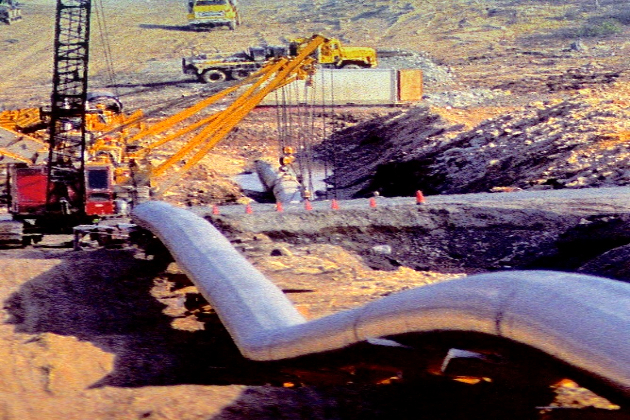Can India insulate itself from oil shocks
RT.com
03 May 2025, 18:39 GMT+10

With global markets disrupted by geopolitical tensions, trade wars, Indias 2025 energy policy shows a clear shift toward stability and strategic independence
India's crude imports from the US surged to a27-month highin April 2025, reflecting a deliberate shift toward reliable suppliers in light of the sanctions on Venezuela and Iran. At the same time, Russia remains a vital partner, offering discounted oil under long-term agreements. India's oil imports from Russia hit a near two-year high in April 2025, driven by deep discounts despite US sanctions. Russia held a 40% market share, while Iraq and Saudi Arabia followed.
India's heavy reliance on imported crude (over 88% of the oil it consumes) renders its economy highly susceptible to external price shocks. Each $1 increase in oil prices swells the national import bill by approximately$1.5 billion, widening the current account deficit and complicating inflation management. While retail price inflation eased to3.61%in February 2025, energy prices remain a volatile variable with outsized influence on consumer prices and economic stability.
This vulnerability is particularly acute given India's ambitious growth trajectory. With the World Bank projecting GDP expansion of6.7%in the financial years 2026 and 2027, unchecked oil price fluctuations could derail fiscal consolidation, destabilize the rupee, and drive up foreign exchange outflows. The stakes are rising not just because of external volatility, but also due to India's internal dynamism. As the world's third-largest oil consumer, India's crude demand is projected to grow by3.2%in 2025, far outpacing China's 1.7%, reflecting its push to become a manufacturing powerhouse under initiatives like Make in India aimed at boosting local industries.
Yet this growth ambition increases India's exposure to market volatility. In today's landscape, stability isn't a luxury - it's a strategic necessity. India's drive to manage risk and regain control over its energy future makes a strong and urgent case for a diversified, sovereignty-focused oil strategy.
Price trends
WithBrent crudehovering between $62-68 and West Texas Intermediate (WTI) between $59-64 per barrel in April 2025, oil markets are walking a tightrope, balancing supply optimism against demand-side fragilities.
One key pressure point stems from US tariffs on steel, aluminum, and imports from key trading partners, which continue to inflate production costs and curb investment in US shale and offshore oil fields. Institutions such as theInternational Energy Agency (IEA)andOPEChave flagged these tariffs as contributors to a potential "tariff-induced stagflationary scenario," with ripple effects on global growth and energy demand, especially in import-reliant economies.
So far in 2025, WTI has fallen 15% and Brent by 14% year-to-date, driven by increased OPEC+ supply and trade-induced investment uncertainty.
For India, which sources nearly 88% of its crude oil from abroad, this downturn presents both a fiscal reprieve and a strategic wake-up call. The softening of prices offers short-term relief, but the persistent volatility underscores a deeper imperative: to diversify supply sources, enhance procurement resilience, and build long-term energy sovereignty amid an era of flux.
The first quarter of 2025 has seen oil prices oscillate within a moderate band, shaped by the twin forces of evolving supply strategies and subdued global demand. In a bid to stabilize prices without stifling recovery, OPEC+ has initiated a phased output increase of2.2 million barrels per daystarting in April, with built-in flexibility to adjust based on market conditions. This cautious recalibration underscores the bloc's effort to maintain control amid shifting demand patterns and a weak macroeconomic outlook.
Brent crude is now expected to average $66-68.5 per barrel for 2025, revised downward from earlier forecasts of $73, reflecting the layered impact of expanded supply, lingering trade frictions, and muted industrial activity in major economies. The US Energy Information Administration (EIA) projects a further softening to around$66by 2026, as non-OPEC+ producers ramp up output and the post-Covid demand rebound loses momentum.
For India, this emerging price stability, though fragile, offers a rare window of opportunity. But the flux remains real: behind these price bands lie geopolitical uncertainties, fractured supply chains, and fiscal vulnerabilities. The challenge is not merely to benefit from cheaper barrels, but to institutionalize resilience through strategic procurement, diversified sourcing, and long-term contracts, turning global flux into national leverage.
Energy sovereignty
In response to turbulent global markets, India has intensified efforts to stabilize oil flows through long-term contracts and currency innovation. A landmark example is Reliance Industries'ten-year crude supply agreementwith Russia's Rosneft, securing up to 500,000 barrels per day. Similarly, Indian Oil Corporation's recent crude purchases from the UAE,settled in rupeesvia bilateral currency swap agreements, mark a significant stride toward energy de-dollarization.
These moves not only enhance India's economic sovereignty but also reflect a broader diplomatic shift aimed at redefining the financial architecture of global energy trade.
However,refinery constraints, particularly in processing heavier Russian grades, continue to limit the full utilization of these supplies, revealing a technical vulnerability within India's diversification strategy. The upcomingHPCL Rajasthan Refinerydesigned to handle medium sour crude, including Russia's Urals, will be a much needed addition to the existing capacities
As India expands its crude sourcing footprint, it is simultaneously reengineering the logistical backbone of its oil trade to withstand chokepoint disruptions and regional instability. Vulnerabilities in traditional maritime routes, notably the Strait of Hormuz and the Red Sea, both exposed to geopolitical flashpoints, have accelerated India's push toward alternative corridors.
Key among these are the Chennai-Vladivostok Maritime Corridor and the ongoing expansion of the International North-South Transport Corridor, both of which aim to diversify oil shipment pathways and reduce transit risk. In parallel, India is assessing the viability of Arctic Sea lanes to import Russian crude, potentially cutting travel time and bypassing conventional bottlenecks.
These infrastructure innovations are not merely logistical upgrades, they are central to India's broader strategy of building a resilient, diversified, and sovereign energy ecosystem capable of withstanding external shocks.
Domestic buffers
In parallel with external diversification and infrastructure realignment, India is advancing domestic energy alternatives to cushion itself from global oil market shocks.
Central to this strategy is itsethanol blending program, which targets a 20% blend by 2025-26 fiscal, a move projected to reduce crude import costs bynearly $4 billion annuallywhile promoting cleaner fuel usage in the transport sector. Now, India is considering raising itsethanol blending target beyond 20%, with a dedicated committee under NITI Aayog, a government think tank, set up to explore this initiative, as announced by Petroleum Minister Hardeep S. Puri.
Investments in second-generation ethanol and advanced biofuels are also gaining momentum, addressing environmental concerns tied to first-generation feedstocks like sugarcane. These efforts reflect India's desire not only to make its fuel basket more green but also to enhance energy self-sufficiency in a volatile geopolitical landscape.
Besides, in 2023-24, Indiaallocated50 billion rupees (around $610 million) to replenish its Strategic Petroleum Reserves and 5.1 billion rupees for additional storage capacity. Although the replenishment plan was cancelled in January 2024 due to expectations of falling oil prices, expanding strategic reserves remains a top priority to buffer against future supply shocks.
By integrating biofuels into its strategy, India is not just responding to climate imperatives, it is fortifying its long-term energy sovereignty through diversification across both borders and technologies.
As global oil currents shift unpredictably, India is no longer content to ride the waves, it's steering the ship. Through diversified sourcing, currency innovation, infrastructure upgrades, and biofuel advances, India is crafting a sovereign energy strategy fit for a turbulent era. In the flux of geopolitics and trade distortions, stability is not given, it is engineered. And in 2025, India is proving that resilience can be a geopolitical asset, not just an economic necessity.
(RT.com)
 Share
Share
 Tweet
Tweet
 Share
Share
 Flip
Flip
 Email
Email
Watch latest videos
Subscribe and Follow
Get a daily dose of Brazil Sun news through our daily email, its complimentary and keeps you fully up to date with world and business news as well.
News RELEASES
Publish news of your business, community or sports group, personnel appointments, major event and more by submitting a news release to Brazil Sun.
More InformationSouth America
SectionCan India insulate itself from oil shocks
With global markets disrupted by geopolitical tensions, trade wars, Indias 2025 energy policy shows a clear shift toward stability...
Western colonialists failed us Ghanaian WWII veteran
Joseph Ashitey Hammond says Allied servicemen returned home in 1945 to hunger and betrayal by the British colonial government The...
(SP)CHINA-BEIJING-DIVING-WORLD CUP-SUPER FINAL-MEN'S 3M SPRINGBOARD
(250503) -- BEIJING, May 3, 2025 (Xinhua) -- Gold medalist China's Wang Zongyuan (C) poses with silver medalist China's Zheng Jiuyuan...
(SP)SPAIN-MADRID-TENNIS-MADRID OPEN-MEN'S SINGLES-SEMIFINAL
(250503) -- MADRID, May 3, 2025 (Xinhua) -- Casper Ruud competes during the men's singles semifinal between Casper Ruud of Norway and...
CEO Dehring hails Barbados' dominance in U-15 cricket triumph
Saint John's [Antigua and Barbuda], May 2 (ANI): Chief Executive Officer of Cricket West Indies (CWI), Chris Dehring, has extended...
Opinion: EU aims at Washington's pain points in looming tariff war
A woman talks through an iPhone at the Berlaymont building, headquarters of the European Commission, in Brussels, Belgium, on March...
Business
SectionGM recalls 720,000 vehicles over V8 engine defect
WASHINGTON, D.C.: General Motors is recalling more than 720,000 vehicles globally over a defect linked to its 6.2L V8 engines, the...
UPS to cut 20,000 jobs, close facilities amid Amazon slowdown
ATLANTA, Georgia: United Parcel Service is cutting 20,000 jobs and closing dozens of facilities, marking one of its biggest shakeups...
JERA to consider Alaska as a potential LNG supplier
TOKYO, Japan: Japan's biggest power company, JERA, says it might buy liquefied natural gas (LNG) from Alaska. This comes as Japanese...
U.S. stocks bounce higher on non-farm payrolls data
NEW YORK, New York - A better-than-expected jobs report boosted U.S. stock markets Friday. Total nonfarm payroll employment increased...
Toyota considers major buyout of key supplier Toyota Industries
TOKYO, Japan: Toyota Motor is weighing a potential investment in a primary buyout of one of its key suppliers, Toyota Industries, the...
UK economic confidence plunges to record low, Ipsos poll reveals
LONDON, U.K.: Britons' outlook on the economy has hit an all-time low, with public confidence plunging to its weakest point since records...












